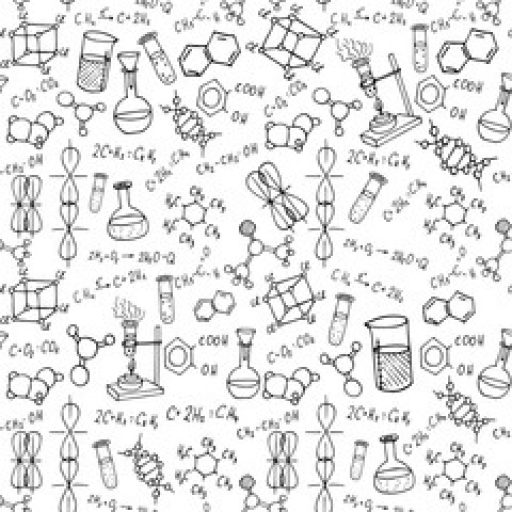Particulate Matter, or PM, is a mixture of solid particles and liquid droplets, both organic and inorganic in nature, which exist in the air around us. They may be small, but they contribute greatly to air quality. Examples include smoke, soot, and even pollen!
There are two major classifications for PM. They are:
1) PM10: Particles which are inhalable, and have a diameter smaller than or equal to 10 micrometres.
2) PM2.5: Particles are inhalable, and have a diameter smaller than or equal to 2.5 micrometres.
Some of these particles are visible to the naked eye, but many are invisible and can only be seen under a microscope!
So how do such particles link to air quality?
For a long time, Singapore has been using the Pollution Standards Index (PSI) as a measure of air quality. You might have come across a table that looks like this:
| 24-hr PSI | Healthy persons | Elderly, pregnant women, children | Persons with chronic lung disease, heart disease |
| ≤100 (Good/Moderate) |
Normal activities | Normal activities | Normal activities |
| 101- 200 (Unhealthy) |
Reduce^ prolonged** or strenuous*** outdoor physical exertion | Minimise^^ prolonged** or strenuous*** outdoor physical exertion | Avoid^^^ prolonged** or strenuous*** outdoor physical exertion |
| 201 – 300 (Very Unhealthy) |
Avoid^^^ prolonged** or strenuous*** outdoor physical exertion | Minimise^^ outdoor activity | Avoid^^^ outdoor activity |
| >300 (Hazardous) |
Minimise^^ outdoor activity | Avoid^^^ outdoor activity | Avoid^^^ outdoor activity |
But do you know how these numbers are calculated?

According to the NEA, the reading is based on six pollutants that include the following:
1) PM10 particles
2) PM2.5 particles
3) Sulphur dioxide (SO2)
4) Carbon monoxide (CO)
5) Ozone (O3)
6) Nitrogen dioxide (NO2)
The concentration of each pollutant are used to calculate their respective sub-index value via a formula. The highest sub-index value calculated will be the PSI reading. Wow!
However, during the haze season, PM2.5 particles are the main pollutants. Hence, in more recent times, the NEA has also displayed the 1-hour PM2.5 concentration readings so that readings are more reflective of the health effects of the air in Singapore.
| Bands | Descriptors | Range of 1-hr PM2.5 (µg/m3) | General Guide |
| I | Normal | ≤ 55 | Among healthy individuals, exposure to high levels of haze particles may cause irritation of the eyes, nose, and throat in healthy individuals. Such irritation resolves on its own in most cases.
Haze particles can affect the heart and lungs, especially in people who already have chronic heart or lung disease e.g. asthma, chronic obstructive pulmonary disease (COPD), or heart failure. Individuals with existing chronic heart and lung conditions should ensure that your medications are on hand and readily available. Each individual’s reaction to pollutants may vary, and the amount of physical activity or exertion that can be performed differs according to your health status or physical capacity. Should you encounter symptoms or discomfort, please take additional measures to prevent further exposure. Persons who are not feeling well, especially the elderly and children, and those with chronic heart or lung conditions, should seek medical attention promptly. |
| II | Elevated | 56 – 150 | |
| III | High | 151 – 250 | |
| IV | Very High | > 250 |
So the next time you want to do an outdoor activity, look not just at the PSI, but also the PM2.5 readings!
You might also be wondering, how are these particles introduced into the atmosphere? In Singapore, the major sources are vehicles and industrial plants/buildings.
The first major source of PM in the air is vehicles.

A report from NEA suggests that vehicles alone contribute to 57% of local PM2.5 emissions! Most of this pollution come from old diesel vehicles, with lower emission standards of the past. The government is hence giving incentives for owners to upgrade older diesel vehicles to newer ones to meet the current Euro V or VI standards. This measure has been quite effective – in the first year of its implementation, more than 6000 vehicles have been replaced.
Petrol vehicles do not contribute so much to PM2.5 levels, but instead, are major contributors of ground level ozone in Singapore. The government are also looking to tighten the emission standards for petrol vehicles to reduce the amount of pollution in the long run.
The second major source of pollution is the industrial sector.

According to an article published by The Straits Times, current annual average concentrations of PM2.5 does not meet WHO standards. Singapore current mean PM2.5 level is between 16 to 19 micrograms per cubic metre, way above the WHO standards of 10 micrograms per cubic metre. The government is hence trying to cut the PM2.5 levels, setting a target of 12 micrograms per cubic metre by 2020. The government is attempting to do this by tightening laws regarding pollution from industrial buildings and have already set new emission standards for companies to comply.

Hopefully, with the new measures, Singapore’s air quality will be improved in the long run to protect the health of Singaporeans.
Image References:
http://igcse101.blogspot.sg/2015/07/the-particulate-nature-of-matter.html
http://www.nea.gov.sg/corporate-functions/newsroom/news-releases/nea-announces-tighter-industrial-emissions-standards-for-better-air-quality
https://www.cartoonstock.com/newscartoons/directory/i/industrial_pollution.asp
https://www.cartoonstock.com/newscartoons/directory/i/industrial_pollution.asp
http://worldartsme.com/vehicle-pollution-clipart.html#gal_post_99054_vehicle-pollution-clipart-1.jpg
https://thisisaphonecall.wordpress.com/tag/hba
https://www.cartoonstock.com/newscartoons/directory/i/industrial_pollution.asp
Content References:
http://www.greenfacts.org/en/particulate-matter-pm/level-2/01-presentation.htm
http://www.haze.gov.sg/air-quality-information
http://www.nea.gov.sg/anti-pollution-radiation-protection
http://www.nea.gov.sg/docs/default-source/corporate/COS-2015/cos-2015-media-factsheet—spore’s-air-quality.pdf
http://www.nea.gov.sg/docs/default-source/corporate/cos-2013/factsheet-on-singapore-air-quality.pdf
http://www.haze.gov.sg/docs/default-source/faq/computation-of-the-pollutant-standards-index-(psi).pdf

